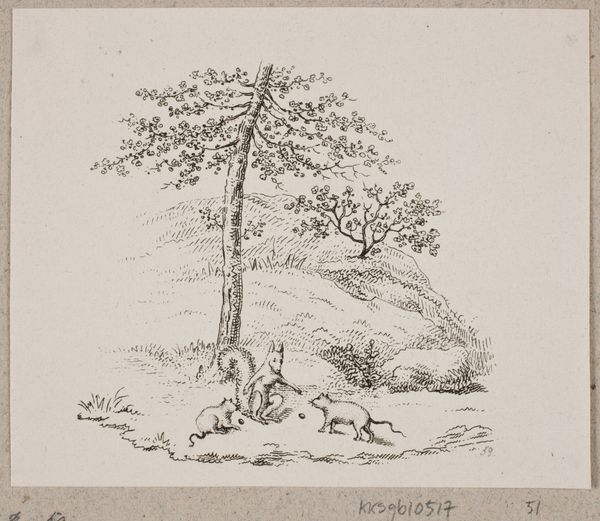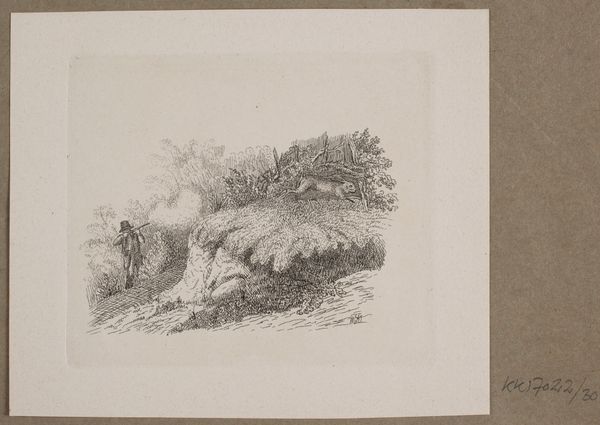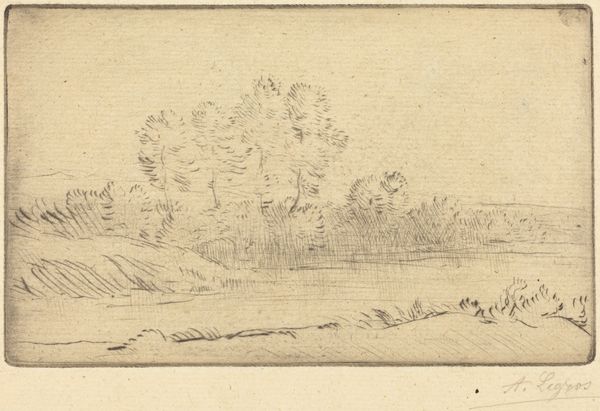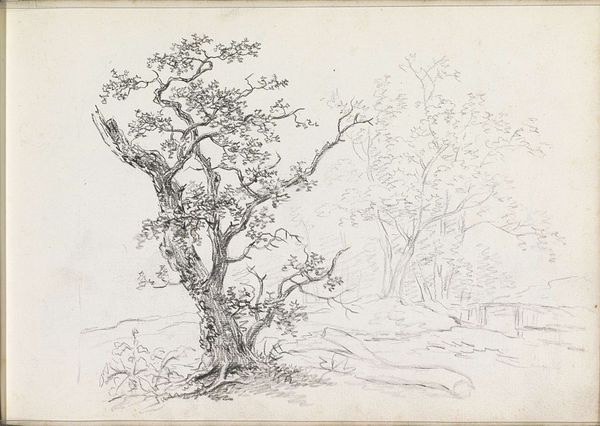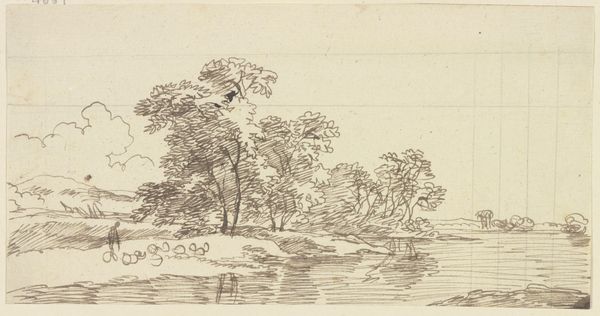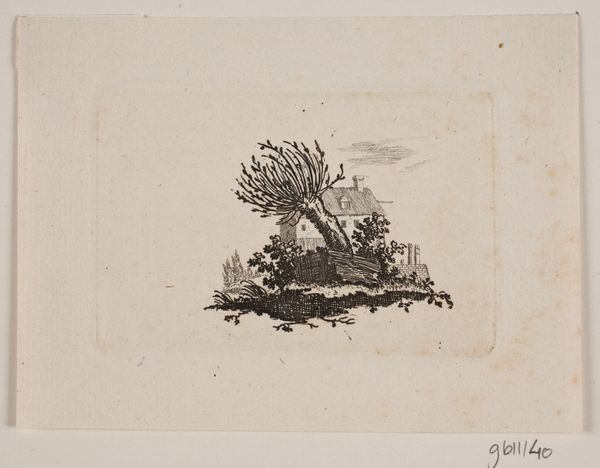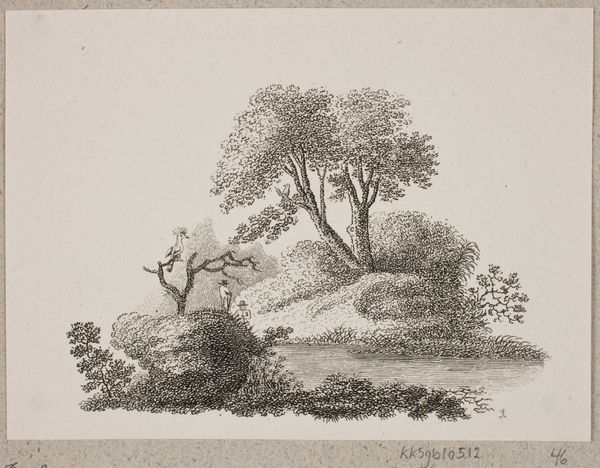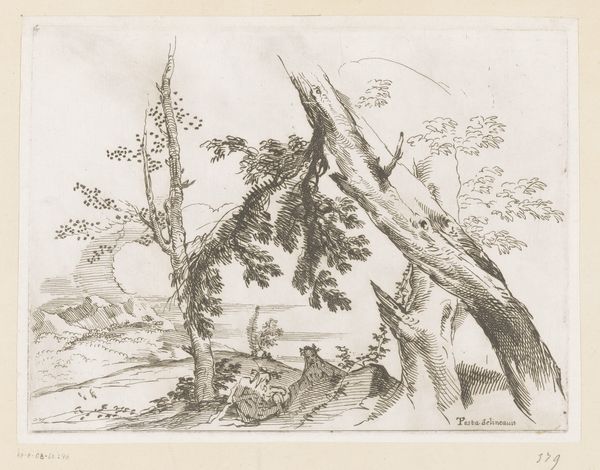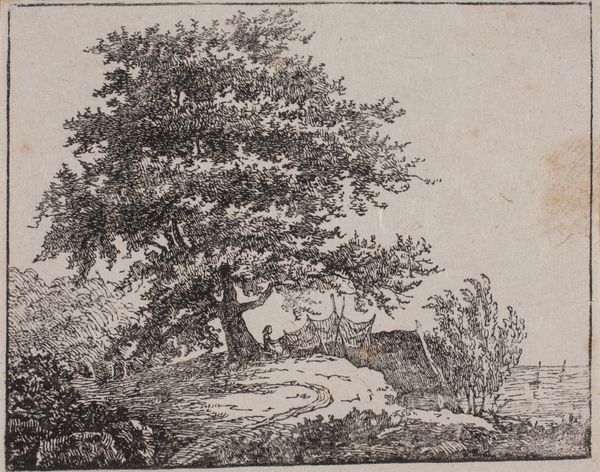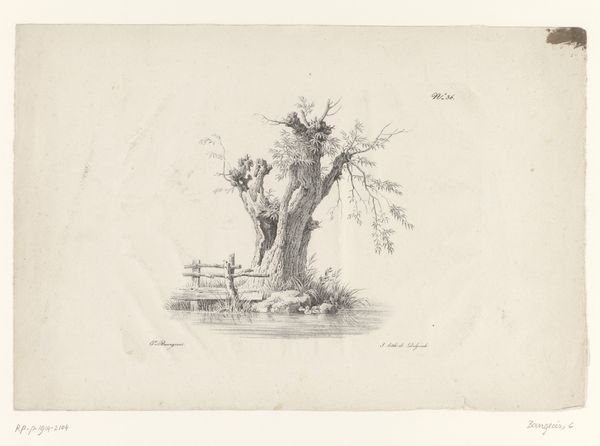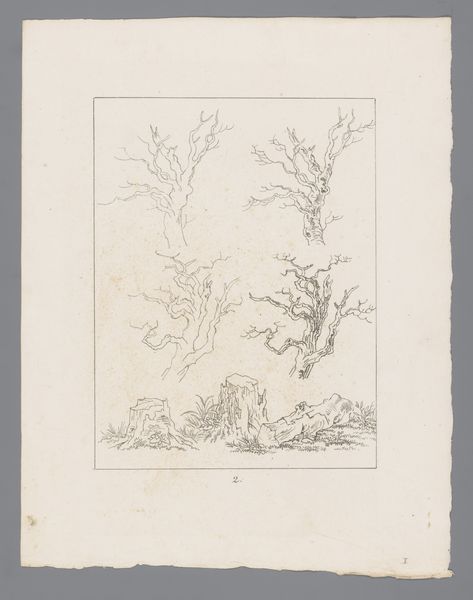
drawing, print, ink, engraving
#
drawing
#
ink drawing
# print
#
pencil sketch
#
landscape
#
ink
#
romanticism
#
line
#
engraving
#
realism
Dimensions: 107 mm (height) x 127 mm (width) (bladmaal)
Editor: Oluf Bagge’s “Tidselen og rosen”, or “The Thistle and the Rose”, from around 1831 to 1833, rendered in ink and engraving… the contrast between the prickly thistle and delicate rose is really striking. It makes me wonder, what is the artist trying to tell us with this seemingly simple pairing? Curator: It’s more complex than simple beauty. Consider the historical context: 19th-century art was increasingly entwined with national identity. These aren't just botanical studies; they are symbols. What might the thistle and rose represent to a Danish artist working in that period? Editor: I see what you mean! Thistles seem a bit… rugged, perhaps representative of the Danish landscape itself, while the rose, though beautiful, maybe a more cultivated or even 'foreign' element? Curator: Precisely. And that tension speaks volumes about Denmark's place in Europe and its evolving self-perception. Also, think about the institutions that supported artists like Bagge. Were they catering to a rising middle class with nationalistic sentiments, or perhaps engaging in a more subtle commentary on power? Editor: So, looking beyond the surface, these are actually powerful statements about culture and national identity playing out. The thistle and the rose… they tell such a different story viewed that way. I would have never thought of that if it wasn't for you, it's incredible! Curator: Absolutely. And understanding art through that lens gives us insight not only into the artwork, but into society itself, and even into the rise of museum culture. Editor: Definitely gave me a new point of view! Thanks!
Comments
No comments
Be the first to comment and join the conversation on the ultimate creative platform.
